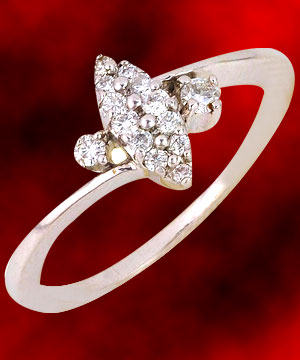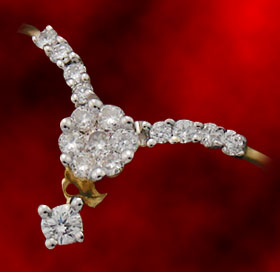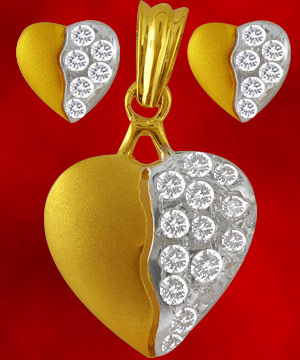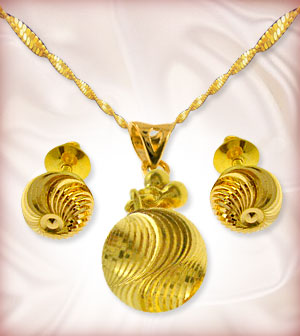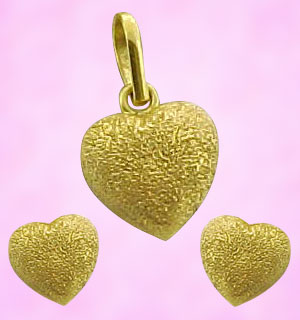Canary Diamond Watches:
The Paris Hilton Limited Edition Canary Watch features a 50mm solid 18kt yellow gold with approximately 1026 stones, 6.07 carats of natural intense yellow diamonds and 3.03 carats of WS1 near colorless white diamonds. Genuine sapphire cabochons are set on the crowns while the main crown is set with diamonds. The six sapphire crystals are set on the gold pave dial. The Swiss made timepiece is designed with a hand made setting, one Swiss automatic movement, four Swiss automatic movement and finely appointed with a genuine yellow alligator strap. A turn of the bezel will reveal either five time zones or four cloves. Canary retails for $150,000.
December 13, 2008
Canary Diamond Watches
Cotton Candy Diamond Watches:
Cotton Candy Diamond Watches:
The Paris Hilton Limited Edition Cotton Candy Watch features a 50mm solid 18kt rose gold with approximately nine carats and 1026 stones of WS1 near colorless white diamonds. Genuine sapphire cabochons are set on the crowns while the main crown is set with diamonds. The six sapphire crystals are set on the gold pave dial. The Swiss made timepiece is designed with a hand made setting, one Swiss automatic movement, four Swiss automatic movement and finely appointed with a genuine black alligator strap. A turn of the bezel will reveal either five time zones or four cloves. Cotton Candy retails for $100,000.
Platinum Jewelry History
Platinum Jewelry History
Platinum jewelry was first used in ancient Egypt and it has been popular ever since. However, it was not until the late 1800's that the popularity of platinum reached the current heights when royalty started to wear them. The world's most famous diamonds, Star of Africa and Hope Diamond, are both in platinum. In the beginning of World War II, the US government declared it a strategic metal and could only be used for official business and platinum jewelry ceased.
Now, platinum has reached its heights once again and is one of the most popular precious metals in personal accessories, especially popular as settings for the highest quality gemstones. Most people who enjoys white gold or silver jewelry would go for platinum if they have the money to spare. If you really want to be impressive, you know what to give her!
November 22, 2008
Valuing Diamonds
Valuing Diamonds
The quality and value of diamonds are measured by four characteristics known as the 4C's. The 4C's relate to a diamond's cut, colour, clarity and carat weight. The quality of a diamond is measured by its cut, colour and clarity. The carat weight measures the size of the diamond. Of all the 4C's, cut is the characteristic directly influenced by man; colour, clarity and carat weight are all dictated by nature.A diamond in its natural, uncut state is described as a "rough diamond". Its natural appearance so resembles a glass pebble that most people would pass it by without a second glance. It is the skill of the diamond cutter that unlocks the brilliance for which diamonds are renowned. If two identical diamonds are placed side by side and one is less brilliant and fiery than the other, the fault lies in the cutting. Such a stone cannot demand as high a price as a well-cut diamond. It is important to distinguish between cut and shape. Some of the more popular shapes of diamonds include Round Brilliant, Oval, Marquise, Pear, Heart and Emerald. Within each of these shapes, however, it is the cut that determines the quality of the stone. For example, most diamonds are cut with 58 facets, regardless of their shape.A diamond's colour is one of the most important factors in determining its value. The nearer a white diamond is to being absolutely colourless, the more rare and valuable it is. The graduations in colour are so subtle that intricate international grading scales have been devised. Diamonds are graded into categories defined by letters. The colour range from exceptional whites (categories D, E and F) to tinted colours (categories M to Z). The best way to pinpoint a diamond's true colour is to place it next to another diamond that has previously been graded. There are also fancy coloured diamonds and these are graded according to their intensity of colour, not lack of it. There are a variety of reasons for diamonds to be coloured. The most common causes, or suggested causes, for the colours yellow, green, blue, brown and pink are described below.Yellow: When nitrogen combines with the diamond crystals during the formation stage it causes a surplus electron in the bonding. This surplus electron absorbs blue light, thus giving off a yellow colour. Yellow diamonds also occur when aggregates of three nitrogens combine and cause surplus bond.Blue: The elements of boron may also be substituted within a diamond during its formation. Boron absorbs red light, hence in the absence of nitrogen, diamonds containing boron are blue in colour. An example of a diamond containing boron is the famous Blue Hope diamond. Diamonds containing boron also exhibit unusual electrical properties and are semi-conductive in nature. Hydrogen is
History of Diamonds
History of Diamonds
From myths about valleys of diamonds protected by snakes, to the production of millions of carats in rough diamonds each year, the history of diamonds is one of mystical power, beauty and commercial expertise.The first recorded history of the diamond dates back some 3,000 years to India, where it is likely that diamonds were first valued for their ability to refract light. In those days, the diamond was used in two ways-for decorative purposes, and as a talisman to ward off evil or provide protection in battle.The diamond was also used for some time as medical aid. One anecdote, written during the Dark Ages by St Hildegarde, relates how a diamond held in the hand while making a sign of the cross would heal wounds and cure illnesses. Diamonds were also ingested in the hope of curing sickness. During the early Middle Ages, Pope Clement unsuccessfully used this treatment in a bid to aid his recovery.During the Middle Ages more attention was paid to the worth of diamonds, rather than the mystical powers surrounding them. Due to the heightened public awareness of the value of diamonds, mine owners perpetuated myths that diamonds were poisonous. This was to prevent the mineworkers swallowing the diamonds in an attempt to smuggle them out of the mines.The popularity of diamonds surged during the Middle Ages, with the discovery of many large and famous stones in India, such as the Koh-I-Noor and the Blue Hope. Today India maintains the foremost diamond polishing industry in the world.As the Indian diamond supply dwindled, smaller finds occurred in Borneo and Brazil, but these were not sufficient to meet the ever-increasing demand for diamonds. The mid-nineteenth century discovery of diamonds near the Orange River in South Africa sparked the world's biggest diamond rush, and helped to satiate the world's increasing appetite for diamonds.During the mid-nineteenth century, diamonds were also being discovered in eastern Australia. However, it was not until late 1970's, after seven years of earnest searching, that Australia's alleged potential as a diamond producer was validated.On October 2nd 1979, geologists found the Argyle pipe near Lake Argyle: the richest diamond deposit in the world. Since then, Argyle has become the world's largest volume producer of diamonds, and alone is responsible for producing over a third of the world's diamonds every year
Diamonds as an Investment
Diamonds as an Investment
Customers when deciding to purchase diamond jewellery will often ask whether it is a good investment. In actual fact, jewellery should never be purchased for investment reasons, only for its beauty. The appeal of diamonds lies in their dazzling beauty and endurance, and their ability to provide a lasting memento of a special occasion. Although diamond jewellery is usually bought for emotional reasons, the value of the diamond content will appreciate in time. Unlike some other commodities, the prices of diamonds have remained stable over the years. As the cost of living rises, so does the average price of diamonds. Diamonds will purchase the same now as they did last year, five years ago, or twenty years ago. Diamonds have lasting value.
Diamonds as an Investment
Diamonds as an Investment
Customers when deciding to purchase diamond jewellery will often ask whether it is a good investment. In actual fact, jewellery should never be purchased for investment reasons, only for its beauty. The appeal of diamonds lies in their dazzling beauty and endurance, and their ability to provide a lasting memento of a special occasion. Although diamond jewellery is usually bought for emotional reasons, the value of the diamond content will appreciate in time. Unlike some other commodities, the prices of diamonds have remained stable over the years. As the cost of living rises, so does the average price of diamonds. Diamonds will purchase the same now as they did last year, five years ago, or twenty years ago. Diamonds have lasting value.
Diamond Buyer's Guide
Diamond Buyer's Guide
Acquiring knowledge of the 4 Cs is crucial before purchasing any diamond: carat weight, diamond clarity, diamond color and diamond cut (not shape). Other advanced characteristics of diamonds include diamond fluorescence and diamond enhancements. By understanding each diamond characteristic and knowing which questions to ask when purchasing a diamond, you are much more empowered when it comes time to make your diamond investment.When purchasing diamonds either for your engagement ring, diamond stud earrings, tennis bracelets or other jewelry, make sure the diamonds you select best suit that type of jewelry application. Some diamond qualities are best suited for engagement rings while others are best suited for diamond stud earrings. Visit our engagement rings section to see some of the most popular ring setting designs. Some diamond qualities are best suited for engagement rings while others are best suited for diamond stud earrings. For more help, see our Diamond Applications Guide.You may also want to check out our sections on Canadian Diamonds and Conflict Diamonds as well. By getting a Conflict Free Canadian Diamond, you can be sure your diamond was not used in funding war or terrorism.
Caring for your Diamonds
Caring for your Diamonds
Diamonds need caring to keep them looking at their brilliant best. They should be cleaned at least once a month to keep away the "dullness" that can be caused by skin oils, soap, cosmetics and even cooking grease. The only substance that does not stick to a diamond is water. A clean diamond will reflect better light. There are several ways of keeping diamond jewellery clean. The detergent bath is performed with a small bowl of warm suds using any mild liquid detergent. Immerse jewellery pieces in the suds and brush gently with a tooth brush. Rinse under warm running water and pat dry with a soft, lint-free cloth. The quick dip method uses one of the liquid jewellery care products available. Follow the instructions on the kit. The latest jewellery-cleaning device is the sonic jewellery cleaner. It is electronically operated and comes with its own solution and directions. Some extra helpful hints to keep diamond jewellery looking at its best. It is better not to wear diamond jewellery when doing rough work or the dishes. Despite the durability of a diamond, it can be chipped by a hard blow along its grain. Take care when doing the housework, not to let diamond jewellery come into contact with chlorine bleach, as it won't harm the diamond but can pit or discolour the mounting. When placing diamond jewellery in a jewellery case, be sure to wrap them individually as they can easily scratch each other as well as other gem jewellery. Be sure to take all types of precious mounted jewellery to a jeweller at least once a year to check for loose settings and signs of wear.
Australian Diamond Industry
Australian Diamond Industry
Australian Argyle Diamonds are internationally reowned for their unique brilliance and stunning array of colours. Unearthed in the rugged Kimberley region in the far north of Western Australia, Argyle Diamonds thrill in shades of exotic pink, sparkling champagne, rich cognac and dazzling white.
From the rare pink diamond to the classic white and natural champagnes, Argyle Diamonds are firing the world's imagination. And why shouldn't they? The Argyle Diamond Mine is the world's biggest producer of natural diamonds and contributes approximately one-third of the world's natural supply.
Discovery Of The Argyle Diamond Mine
The Argyle diamond story has its origins in the early 1970s, when one of the world's most significant find of diamonds was made at Smoke Creek in the remote north of Western Australia, over 2000 kilometres from Perth, the state capital.
Although significant, it is certainly not the first discovery of diamonds in Western Australia. Diamonds had been recovered in the Pilbara region as far back as the 1890s but the primary source of any of these diamond finds had never been located.
The key was time and patience. For decades, geologists had known that a major source of diamonds existed in Australia, but is wasn't until 1972 that their work had identified the Kimberley region as being the most likely location. A joint venture was formed. Geologists spend the next seven years patiently searching the region to discover the Argyle diamond deposit, tantalised by new clues and frustrated by dead ends.
The geologists received their biggest encouragement yet with the Ellendale Prospect in 1977. A number of diamond-bearing kimberlite pipes were discovered in Ellendale, located near Derby. However, the evaluation of the Ellendale Prospect showed it to be uneconomical.
It wasn't until October 2 1979, that geologists were literally standing on top of the richest diamond deposit in the world. They had pinpointed the Argyle Diamond pipe.
The discovery was made while working in Smoke Creek near the awesome Lake Argyle, a man-made dam covering some 720 square kilometres. Geologists found several stones in the creek bed and back tracked along the course finding more diamonds as they went until they climbed high into the range and before long were standing on the Argyle diamond pipe.
What followed was an exclusive programme of drilling, sampling and evaluation. In 1982 the joint venture partners decided to develop a mining operation.
August 24, 2008
Krishna Statue
 Description : This Statue is made from five metals with antique golden finish.
Description : This Statue is made from five metals with antique golden finish.
Weight : 35 Kg
| Price: $5,111.00 | |
18KT Gold Necklace Set
Description : Very beautiful and unique 18KT Gold Venetian sewn necklace set. This set is very delicate and beautiful as it is woven gold threads.
Price: $1,499.95
Weight : 24.10 gms
Product : 22KT Gold Ganesha Pendant
Description : Beautiful and unique 22KT gold Right Trunk Ganesha pendant. Height 3/4 in x Width 9/16 in (Not Including Hook)
Weight : 3.5
Price: $199.95
diamond Mataji Pendant
Description : Very beautiful and unique two-tone diamond gold pendant. Set in 18K gold there are a total of .58 cts of diamonds. Very beautiful Piece! 3.5 cm X 2.75 cm
Weight : 8.40 gms
Price: $749.95
Gold Plated Necklace set
 Description : Very beautiful, exquisite and heavy gold plated designer set with magenta jaipuri beads and golden beads
Description : Very beautiful, exquisite and heavy gold plated designer set with magenta jaipuri beads and golden beads
Price: $399.95
Weight : 154.8 gms
May 17, 2008
Description
Asmi diamond ring.
No. of diamonds: 14.
Diamond weight: 0.16 ct.
Gold purity: 18 K.
Gold color: Yellow gold.
Gold weight: 2.34 grams.
Brand: Asmi.
Description
Asmi diamond ring.
No. of diamonds: 16.
Diamond weight: 0.22 ct.
Gold purity: 18 K.
Gold color: Yellow gold.
Gold weight: 2.31 grams.
Brand: Asmi.
Description
Asmi diamond earrings.
No. of diamonds: 10.
Diamond weight: 0.07 ct.
Gold purity: 18 K.
Gold color: Yellow gold.
Gold weight: 1.59 grams.
Brand: Asmi.
Description:
Meena gold set.
It includes a pair of gold tops and a gold pendant.
Gold weight: 6 grams.
Gold color: Yellow.
Gold purity: 22 Carat.
Brand: Sri Jagdamba Pearls.
Description:
Surprise your loved one with a lovely looking heart shaped gold pendent set with cz stones.
Gold weight: 6.9 grams.
Purity of gold: 18 carat.
Stone Type: CZ-American diamond.
Description:
Ethnical and gorgeous tanya gold set of gold meena work pendent and pair of tops.
Gold weight: 4 Grams.
Gold color: Yellow.
Gold purity: 22 Carat.
The set does not include the chain.
Brand: Sri Jagdamba Pearls.
Description:
Heart shape pendent with tops of pure gold.
Gross weight: 3.1grams
Gold purity: 22ct.
Brand: Sri Jagdamba pearls
Today's Freshwater Pearls --- a Worthy Opponent of Saltwater Pearls
Today's Freshwater Pearls --- a Worthy Opponent of Saltwater Pearls
When you think of Freshwater pearls, what comes to mind? Do you envision a small, irregular shape?
That was pretty much the case years ago. For a long time, Freshwater pearl farms only produced low quality pearls, while Saltwater pearls were more round and of better quality.
But today, the Chinese have made advances in their cultivating methods that have allowed them to match the quality of Saltwater pearls. Many improvements have been seen in the cultivation and processing techniques of Freshwater pearls. With modern freshwater cultivation methods, Freshwater pearls today are of excellent quality - with outstanding body, shape, and luster which can be on equal footing with that of Saltwater Akoya pearls. Therefore, the least expensive cultured Freshwater pearl product on the market today rivals the quality of the most expensive natural pearls. This value is obvious to consumers wanting Chinese Freshwater bargains.
The once inferior Freshwater pearls are steadily becoming a strong opponent of Saltwater pearls.
Cultured Freshwater pearls are farmed in lakes, ponds and are grown in mussels. The Freshwater pearl cultivating technique usually produces twenty or more pearls in one oyster. Recent research shows a Freshwater mollusk can create as many as 50 pearls at a time.
Saltwater Cultured Pearls are farmed in saltwater. The term "Akoya" is used internationally to signify Saltwater Pearls from Japan. Here's how it works: the Akoya mollusk is implanted with a round bead along with a small piece of mantle tissue which allows nacre to envelop around the bead. The number of beads that can be inserted into the mollusk. This limited creation makes Saltwater Pearls much more expensive than Freshwater pearls
Learn About Pearls
Learn About Pearls
Pure and elegant, pearls have long been the symbol of purity, class and feminine charm.
And today they are a fixture in the modern woman's wardrobe.
Pearls are among the oldest and most universal of all gems. They are the oldest jewels known to man, and the only gem made by a living animal. A pearl is one of the few gemstones that requires no cutting or polishing. Their beauty is evident from the moment they are removed from the shell.
In many countries pearls were worn as a declaration of wealth and power, and were used as a trinket to bring good fortune, to ward off evil spirits and to cure illnesses.
Would you like to get the lowest wholesale priced genuine freshwater pearl jewelry on the market today? Shop our store to see how much you will save.
pearl nackless
pearl jewerly
Sort: Genuine Freshwater Pearls
Size: 8-9mm
Type: Round Pearls
Grade: AA+
Length: 16" / 17" / 18"
Pearl Color Availability: White, Pink, Mauve or Black
Stringing: Double Stranded Silk Thread
Clasp: 3-Row 925 Sterling Silver Clasp / 3-Row 14K Yellow Gold Clasp / 3-Row 14K White Gold Clasp
silver jewelry
Women throughout history have enjoyed the unmistakable shimmer and shine of silver jewelry sets. These jewelry sets are certain to make a sparkling impression, they include unique collection of silver bracelets, earrings, rings, necklaces and pendants. Possessing the look of designer jewelry, jewelry sets are inspired by some of today's top designers. Silver jewelry truly reflects the classic, high fashion and antique styles. Made with careful attention to every detail, the designs are very attractive and created in all types of silver, ranging from pure silver to German silver to sparkling sterling silver. These are further ornamented with the help of precious, semi-precious and artificial gemstones such as amethyst, garnet, blue topaz, cubic zirconia, freshwater pearls, beads and citrine. Lovely silver jewelry sets are perfect for formal occasions such as dinner parties, pageants, and proms. Silver jewelry captures the elegance of silver and buyers can indulge in custom-designed silver set, many with coordinating jewelry such as glittering silver bracelets can be paired perfectly with earrings and pendants. Silver jewelry sets add a touch of color and sophistication to the accessories collection.
